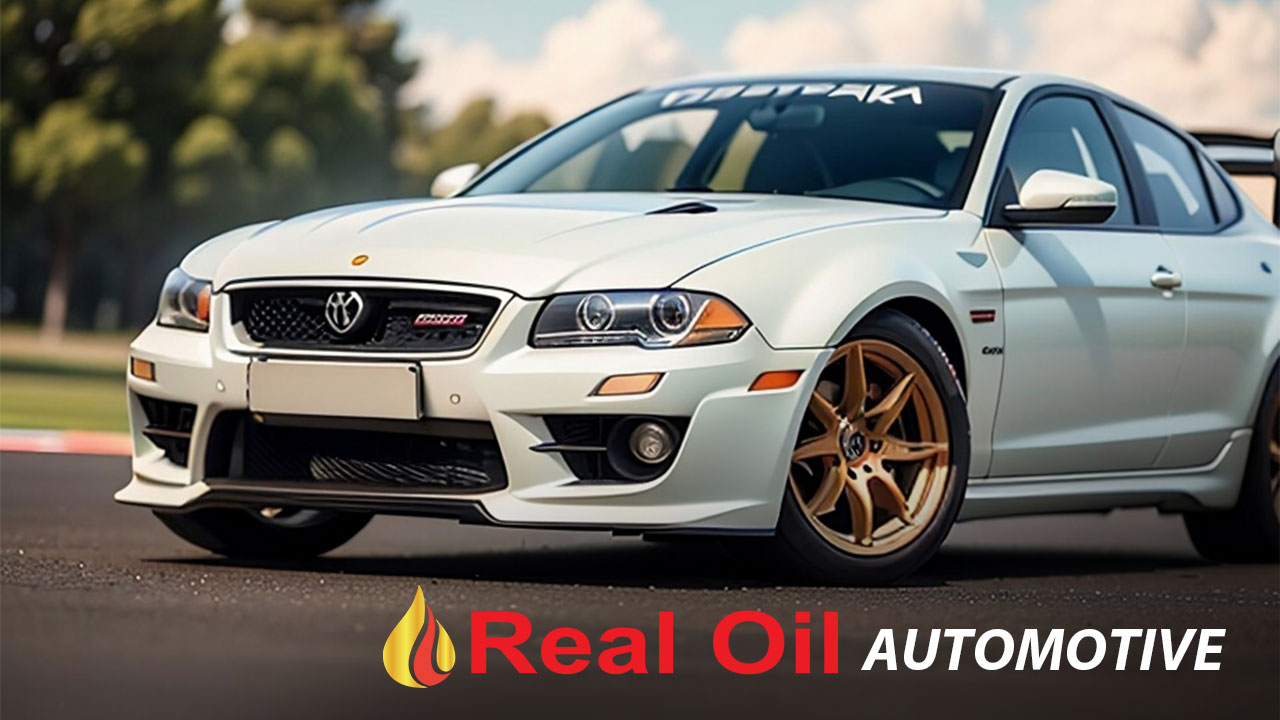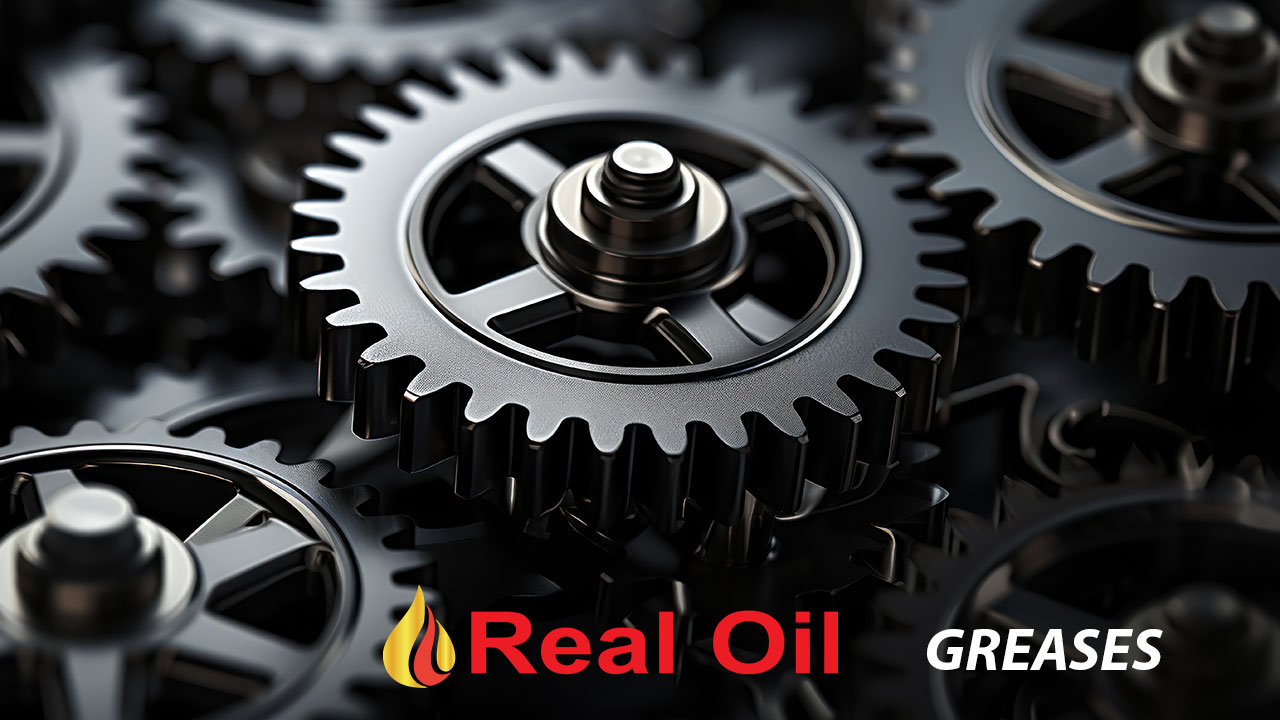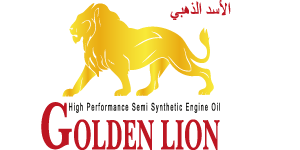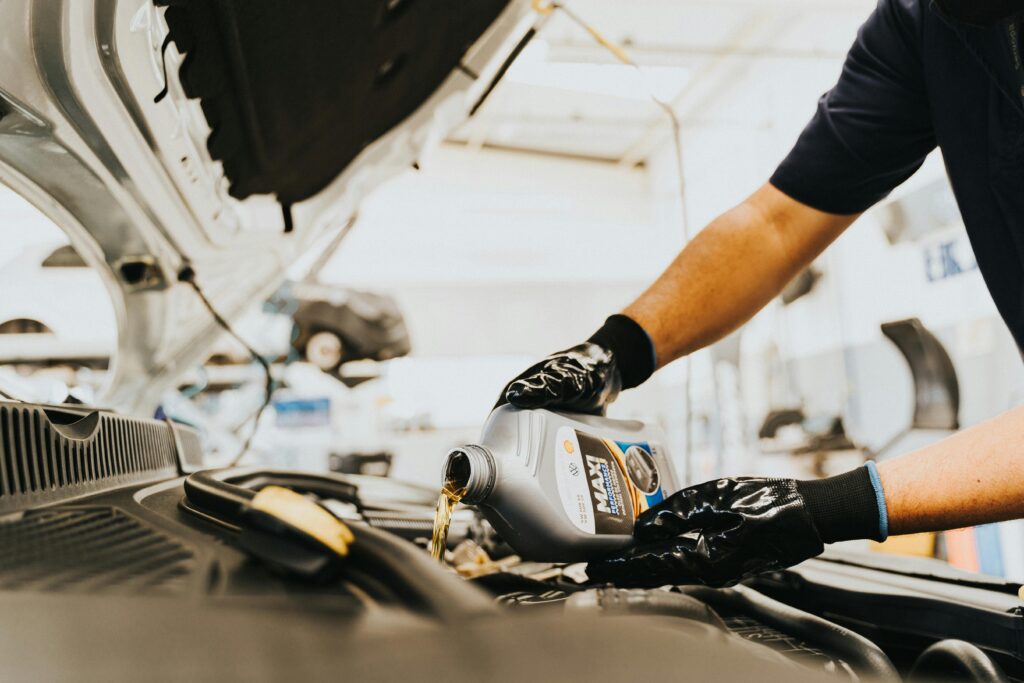Real Oil Products
Our lubricants are crafted using top-tier raw materials and benefit from superior formulations across every category.

AUTOMOTIVE
Your vehicle is more than just an engine and wheels; it's a complex and advanced machine with numerous parts and components. Keep it running smoothly throughout your journey with our premium range of lubricants, including diesel and petrol engine oils, transmission fluids, gear oils, and antifreeze/coolant.

INDUSTRIAL
To keep your operations running smoothly, machinery forms the backbone of any industry and requires proper care. Our extensive range of industrial lubricants is specifically formulated to offer maximum protection and prolong the life of your equipment.

MARINE
Safeguard both your engine and the environment with our selection of marine products. Designed to enhance the cost-effectiveness, efficiency, and consistency of your vessel's performance, our range also ensures compliance with the ever-increasing environmental and safety standards.

GREASES
To ensure smooth operations, keep the momentum going with our greases, specifically designed to maintain and protect your machine parts under various working conditions.
Our Brands
Discover Excellence in Every Drop


Our Services
Our lubricants are crafted using top-tier raw materials and benefit from superior formulations across every category.

Oil Analysis
Over a century ago, in-service oil analysis and used oil analysis were first applied to locomotive engines. Today, these practices are essential components of condition-based maintenance (CBM), a strategy that assesses the actual condition of machinery to determine maintenance needs and schedules.
Oil condition monitoring (OCM) provides insights into both machine wear and lubricant condition. Maintenance professionals and reliability engineers use oil analysis results to make informed decisions about maintenance. Expert analysis and thorough data review often identify potential issues before they require major repairs, helping to reduce the frequency of oil changes.
Real Oil L.L.C offers a Used Oil Analysis Program to support our clients. Our goal is to enhance customer productivity and equipment reliability through condition-based monitoring (CBM). This approach minimizes engine, machine, and equipment downtime and helps prevent catastrophic failures.
They Need Your Help!
Trust Real Oil for a smoother drive. Feel the performance, every moment on the road.
Frequently Asked Question
Real oil: Best solution of lubricants
- Since 2010, REAL OIL has proudly served as an importer and wholesaler of GOLDEN STAR and GOLDEN LION lubricant oils in Bangladesh, sourced directly from the United Arab Emirates. Our decade-long commitment to excellence is rooted in our unwavering dedication to loyalty and quality. At REAL OIL, we believe that trust and honesty form the cornerstone of our business. We strive to build lasting relationships with our customers by providing top-notch products and exceptional service. By choosing REAL OIL, you align yourself with a company that prioritizes integrity, reliability, and customer satisfaction. Let us be your trusted partner in ensuring the longevity and performance of your machinery with our premium lubricant oils. Join us today and experience the REAL OIL difference.
- Engine oil, also known as motor oil, is a vital lubricant used in internal combustion engines. Its primary purpose is to reduce friction and wear on moving parts, clean the engine of sludge and varnish (detergents), improve sealing, and cool the engine by carrying heat away from moving parts.
Engine oil is composed of base oils and various additives. The base oils can be mineral, synthetic, or a blend of the two. The additives include:
- **Detergents**: Keep the engine clean by preventing deposit formation.
- **Dispersants**: Keep particles in suspension to avoid sludge formation.
- **Anti-wear Agents**: Form protective layers on metal surfaces.
- **Corrosion Inhibitors**: Protect engine parts from rust and corrosion.
- **Viscosity Modifiers**: Help the oil maintain optimal viscosity at various temperatures.
- **Antioxidants**: Prevent oil oxidation, prolonging the oil’s life.
- **Friction Modifiers**: Reduce friction to improve efficiency.
**Types of Engine Oil:**
- **Conventional Motor Oil**: Made from refined crude oil, suitable for light-duty and older engines.
- **Synthetic Motor Oil**: Chemically engineered for superior performance and protection, ideal for high-performance and modern engines.
- **Synthetic Blend Motor Oil**: A mix of synthetic and conventional oils, offering balanced performance and protection.
- **High-Mileage Motor Oil**: Formulated for engines with over 75,000 miles, containing seal conditioners to reduce leaks and oil consumption.
**Viscosity:**
Viscosity is a measure of an oil’s thickness and its resistance to flow. It’s crucial for ensuring the oil provides adequate lubrication under various temperature conditions. Engine oil viscosity is classified by the Society of Automotive Engineers (SAE) and is typically represented by a number system (e.g., 5W-30). The “W” stands for winter, indicating the oil’s flow at cold temperatures, while the second number indicates the oil’s viscosity at operating temperature.
**Functions of Engine Oil:**
- **Lubrication**: Reduces friction between moving parts, minimizing wear and tear.
- **Cooling**: Carries away heat generated from engine components to prevent overheating.
- **Cleaning**: Contains detergents and dispersants to clean engine parts and prevent deposit formation.
- **Sealing**: Forms a seal between the piston rings and cylinder walls to maintain compression.
- **Protection**: Prevents rust and corrosion of engine parts.
**Changing Engine Oil:**
Regular oil changes are crucial for maintaining engine health. The frequency of oil changes depends on the vehicle manufacturer’s recommendations, the type of oil used, and driving conditions. Modern engines and synthetic oils often allow for longer intervals between oil changes, sometimes up to 10,000 to 15,000 miles.
**Environmental Impact:**
Used engine oil contains contaminants that can harm the environment if not disposed of properly. Recycling used oil helps prevent pollution and conserves resources by refining and reusing the oil.
**Choosing the Right Engine Oil:**
Selecting the appropriate engine oil involves considering factors such as the vehicle manufacturer’s specifications, the engine’s age and condition, driving habits, and climate. The owner’s manual typically provides recommendations for the best oil type and viscosity grade.
**Conclusion:**
Engine oil is an essential component for the optimal functioning of an internal combustion engine. Understanding its composition, types, and functions helps in selecting the right oil and maintaining the engine properly. Regular maintenance, including timely oil changes, ensures the longevity and efficiency of the engine, providing a smooth and reliable driving experience.
Virgin base oil is a type of base oil that is refined directly from crude oil without having been used before. It serves as the primary raw material for producing various lubricants, including engine oils, hydraulic fluids, and other industrial lubricants.
Production Process:
The production of virgin base oil involves several refining steps to remove impurities and unwanted components from crude oil. The process typically includes:
- Distillation: Crude oil is heated and separated into various fractions based on boiling points.
- Solvent Extraction**: Specific solvents are used to remove undesirable components, such as aromatics and sulfur compounds.
- Hydrotreating: Hydrogen is used to remove sulfur and nitrogen compounds, improve oxidation stability, and saturate unsaturated hydrocarbons.
- Dewaxing: Removes waxy components to improve low-temperature properties.
- Finishing: Additional treatments to enhance the oil’s final properties, ensuring it meets required specifications.
Types of Virgin Base Oils:
Virgin base oils are classified into different groups based on their refining process, viscosity index (VI), sulfur content, and saturates level. The American Petroleum Institute (API) classifies base oils into five groups:
- Group I: Solvent-refined, contains a higher level of sulfur and aromatics, with a low to moderate viscosity index (VI) (80-120).
- Group II: Hydrotreated, has lower sulfur and aromatic content, with a higher VI (80-120).
- Group III: Severely hydrotreated, very low sulfur and aromatic content, with a high VI (120+).
- Group IV: Polyalphaolefins (PAOs), synthesized from small uniform molecules, providing excellent performance characteristics.
- Group V: All other base oils not included in Groups I-IV, such as esters and naphthenics.
Characteristics and Properties:
Virgin base oils possess several key characteristics that make them suitable for various applications:
- High Purity: As they have not been used before, they are free from contaminants and degradation products.
- Consistency: Manufactured to meet specific standards, ensuring consistent quality and performance.
- Stability: Good oxidative and thermal stability, which is crucial for the longevity and effectiveness of lubricants.
- Versatility: Can be tailored with additives to meet the requirements of different applications.
Applications:
Virgin base oils are used in a wide range of applications, including:
- Automotive Lubricants: Engine oils, transmission fluids, and gear oils.
- Industrial Lubricants: Hydraulic fluids, compressor oils, and turbine oils.
- Metalworking Fluids: Used in cutting, grinding, and forming processes.
- Process Oils: Used in the manufacturing of rubber, plastics, and other materials.
- Marine Oils: Lubricants for marine engines and equipment.
Advantages:
- Performance: Provides a clean slate for formulating high-performance lubricants with optimal properties.
- Durability: Enhances the longevity and reliability of machinery and engines.
- Efficiency: Helps in achieving better fuel economy and reduced emissions in automotive applications.
Environmental Considerations:
While virgin base oils are essential for producing high-quality lubricants, the refining process and use of crude oil raise environmental concerns. Sustainable practices, such as recycling and re-refining used oils, are important to minimize environmental impact and promote resource conservation.
Conclusion:
Virgin base oil is a fundamental component in the formulation of lubricants, offering purity, consistency, and tailored performance. Understanding its production, types, and applications helps in selecting the right base oil for various industrial and automotive needs. As the industry moves towards sustainability, the role of virgin base oil continues to evolve, balancing performance with environmental responsibility.
Recycled base oil, also known as re-refined or reclaimed base oil, is produced from used lubricating oil that has been cleaned and processed to remove contaminants and restore its properties. This process allows the used oil to be reused in various applications, reducing waste and conserving natural resources.
Recycling Process:
The process of recycling used oil involves several steps to ensure that the final product meets quality standards comparable to virgin base oil. The main steps include:
- Collection and Testing: Used oil is collected from various sources, such as automotive service centers and industrial facilities. It is then tested to determine its composition and contamination levels.
- Pre-treatment: The collected oil is subjected to processes such as settling, filtration, and centrifugation to remove water, solids, and heavy contaminants.
- Distillation: The pre-treated oil undergoes distillation to separate it into different fractions based on boiling points, removing lighter and heavier components.
- Hydrotreating: Hydrogen is used to remove impurities like sulfur, nitrogen, and oxygen compounds. This process also saturates unsaturated hydrocarbons, improving the oil’s stability.
- Dewaxing: Any waxy substances are removed to enhance the oil’s low-temperature performance.
- Additive Blending: The base oil is blended with performance-enhancing additives to meet specific requirements for various applications.
Quality and Performance:
Recycled base oils can achieve quality levels comparable to those of virgin base oils, thanks to modern re-refining technologies. They must meet stringent specifications set by organizations such as the American Petroleum Institute (API) and ASTM International to ensure they perform effectively in various applications.
Types of Recycled Base Oils:
Similar to virgin base oils, recycled base oils can be classified based on their properties and refining process. They are often categorized into:
- Group I: Contains a higher level of impurities and has a lower viscosity index (VI).
- Group II: More refined with fewer impurities and a higher VI.
- Group III: Highly refined, with properties approaching those of synthetic oils.
Advantages:
- Environmental Benefits: Recycling used oil reduces waste and prevents environmental contamination from improper disposal. It also conserves natural resources by reducing the demand for new crude oil.
- Energy Savings: The re-refining process typically requires less energy than producing base oil from crude oil, contributing to energy conservation.
- Cost-Effectiveness: Re-refined oils can be less expensive than virgin oils while providing similar performance, offering cost savings to consumers and businesses.
Applications:
Recycled base oils are used in a wide range of applications, including:
- Automotive Lubricants: Engine oils, transmission fluids, and gear oils.
- Industrial Lubricants: Hydraulic fluids, compressor oils, and turbine oils.
- Metalworking Fluids: Used in cutting, grinding, and forming processes.
- Process Oils: Used in the manufacturing of rubber, plastics, and other materials.
- Marine Oils: Lubricants for marine engines and equipment.
Challenges:
- Perception: Some consumers and industries may have concerns about the quality and performance of recycled base oils compared to virgin oils. Education and awareness can help overcome these misconceptions.
- Contamination Control: Ensuring the removal of contaminants and maintaining consistent quality can be challenging, requiring advanced technology and rigorous testing.
Conclusion:
Recycled base oil is an environmentally friendly and cost-effective alternative to virgin base oil, offering comparable quality and performance for various applications. Through advanced re-refining processes, used oil can be transformed into a valuable resource, contributing to sustainability and resource conservation. As awareness and technology continue to improve, the use of recycled base oil is expected to grow, playing a crucial role in the circular economy and environmental protection.
Differences Between Recycled and Virgin Base Oil
- Source and Production Process:
– Virgin Base Oil:
– Source: Derived directly from refining crude oil.
– Production Process: Involves distillation, solvent extraction, hydrotreating, dewaxing, and finishing. The process is designed to remove impurities and achieve specific properties needed for high-performance lubricants.
– Recycled Base Oil:
– Source: Produced from used lubricating oils collected from various sources like automotive and industrial facilities.
– Production Process: Includes collection, pre-treatment (removing water, solids, and heavy contaminants), distillation, hydrotreating, and additive blending. The goal is to remove contaminants and restore the oil’s properties to meet industry standards.
- Quality and Purity:
– Virgin Base Oil:
– Quality: Generally considered to have a higher purity level since it is produced from crude oil with controlled and predictable refining processes.
– **Consistency:** Consistently meets the required specifications for high-performance applications.
– **Recycled Base Oil:**
– **Quality:** Modern re-refining technologies allow recycled oils to achieve quality levels comparable to virgin oils, but the starting material (used oil) can vary, affecting consistency.
– **Purity:** Contaminants and degradation products are removed, but maintaining consistent purity can be more challenging compared to virgin oil.
**3. Environmental Impact:**
– **Virgin Base Oil:**
– **Impact:** Requires crude oil extraction and extensive refining processes, leading to higher energy consumption and environmental impact. Production involves carbon emissions and other pollutants associated with oil refining.
– **Resource Use:** Relies on non-renewable crude oil resources.
– **Recycled Base Oil:**
– **Impact:** Environmentally friendly as it reduces waste and the need for crude oil extraction. The re-refining process generally uses less energy compared to producing virgin oil.
– **Sustainability:** Promotes a circular economy by reusing existing resources and minimizing environmental pollution from used oil disposal.
**4. Cost:**
– **Virgin Base Oil:**
– **Cost:** Often more expensive due to the costs associated with crude oil extraction, refining, and production processes.
– **Recycled Base Oil:**
– **Cost:** Typically less expensive as it utilizes used oil as a feedstock, and the re-refining process can be more cost-effective. Cost savings are also realized by reducing the need for new crude oil.
**5. Performance and Applications:**
– **Virgin Base Oil:**
– **Performance:** Known for high performance and reliability, making it suitable for demanding applications in automotive, industrial, and marine environments.
– **Applications:** Used in high-quality lubricants, hydraulic fluids, engine oils, and more.
– **Recycled Base Oil:**
– **Performance:** Advances in re-refining technology have enabled recycled base oils to meet stringent performance standards. However, perceptions about quality can still affect its acceptance in some high-performance applications.
– **Applications:** Widely used in similar applications as virgin base oils, including automotive, industrial, and process oils, but may be more commonly used in less critical applications due to lingering perceptions about quality.
**6. Additives:**
– **Virgin Base Oil:**
– **Additives:** Blended with a range of additives to enhance properties such as viscosity, stability, anti-wear, and corrosion resistance. The compatibility and effectiveness of additives are well-established with virgin oils.
– **Recycled Base Oil:**
– **Additives:** Also blended with additives to achieve desired performance characteristics. Modern formulations are designed to ensure that recycled base oils can perform on par with virgin oils when used with appropriate additives.
**Conclusion:**
Virgin base oils and recycled base oils each have distinct advantages and challenges. Virgin base oils offer consistent high quality and performance, making them ideal for critical applications, but at a higher environmental and financial cost. Recycled base oils provide an environmentally friendly and cost-effective alternative, with quality and performance that have significantly improved thanks to advanced re-refining technologies. Understanding these differences helps in making informed decisions about which type of base oil to use for specific applications, balancing performance, cost, and environmental impact.
SAE (Society of Automotive Engineers) and API (American Petroleum Institute) Licenses: Explanation and Overview
**SAE License:**
**Definition:**
The Society of Automotive Engineers (SAE) is a professional organization that develops and publishes standards for engineering professionals in various industries, including automotive. One of the key areas where SAE standards are widely used is in the classification of motor oil viscosity.
**SAE Viscosity Grades:**
SAE has established a system to classify motor oil based on its viscosity, which is a measure of the oil’s resistance to flow. This classification helps consumers and industry professionals understand the oil’s performance characteristics at different temperatures.
**SAE J300 Standard:**
This is the standard used for defining the viscosity grades of motor oils. It includes both single-grade (e.g., SAE 30) and multi-grade (e.g., SAE 5W-30) oils.
– **Single-Grade Oils:** These oils have a fixed viscosity and are suitable for use in specific temperature ranges.
– **Multi-Grade Oils:** These oils have additives that allow them to perform well across a range of temperatures. The first number (e.g., 5W) indicates the oil’s viscosity at low temperatures (the “W” stands for winter), while the second number (e.g., 30) indicates the viscosity at high temperatures.
**Importance of SAE Viscosity Grades:**
– **Engine Protection:** Ensures that the oil provides adequate lubrication under various operating conditions.
– **Performance:** Helps in selecting the right oil for different types of engines and climates.
– **Fuel Efficiency:** Correct viscosity can contribute to better fuel economy by reducing friction.
**API License:**
**Definition:**
The American Petroleum Institute (API) is a national trade association representing the oil and natural gas industry. The API establishes standards for the performance of motor oils and certifies products that meet these standards.
**API Service Categories:**
API has created a classification system for motor oils based on their performance characteristics and suitability for different types of engines. These categories are divided into two main groups:
– **API S Categories:** For gasoline engines (e.g., API SN, API SP).
– **API C Categories:** For diesel engines (e.g., API CK-4, API CJ-4).
**API Certification Marks:**
– **API Donut:** Indicates that the oil meets specific API performance standards. The donut shows the oil’s viscosity grade and the API service category.
– **API Starburst:** Indicates that the oil meets the latest International Lubricant Standardization and Approval Committee (ILSAC) standards for gasoline engines, which include additional performance requirements beyond the API S categories.
**API Licensing Process:**
– **Testing:** Motor oils undergo rigorous testing to ensure they meet API standards for performance, including tests for wear protection, deposit control, and compatibility with emission control systems.
– **Certification:** Oils that pass these tests can display the API certification marks, assuring consumers of their quality and suitability for specific engine types.
**Importance of API Licenses:**
– **Engine Performance:** Ensures the oil provides adequate protection and performance for specific engine types.
– **Consumer Assurance:** Helps consumers identify high-quality oils that have been tested and certified.
– **Manufacturer Requirements:** Many vehicle manufacturers specify API-certified oils to ensure compatibility and optimal performance of their engines.
**Conclusion:**
SAE and API licenses play crucial roles in the automotive industry by standardizing motor oil characteristics and performance. The SAE classification system helps in identifying the right oil viscosity for different temperature conditions, ensuring proper lubrication and engine protection. The API certification system ensures that oils meet specific performance standards, providing consumers and manufacturers with confidence in the oil’s quality and suitability for various engines. Together, these licenses help maintain engine health, improve performance, and extend the lifespan of vehicles.
Lithium Grease: Explanation and Overview
**Definition:**
Lithium grease is a type of lubricant known for its versatility and high performance in a wide range of applications. It is made by combining lithium soap (the thickener) with base oil and various additives. The lithium soap, typically a lithium 12-hydroxystearate, gives the grease its consistency and desirable properties.
**Properties:**
Lithium grease is renowned for several key characteristics that make it highly effective:
- **High Temperature Stability:** It can withstand high temperatures, typically up to around 130°C (266°F), without melting or breaking down.
- **Water Resistance:** Offers excellent resistance to water washout, making it suitable for applications where moisture is present.
- **Oxidation Stability:** Resists oxidation, helping to maintain its lubricating properties over time and extend the life of the grease.
- **Mechanical Stability:** Retains its consistency and structure under mechanical stress, reducing the risk of leakage or loss of lubrication.
- **Corrosion Protection:** Contains additives that protect metal surfaces from rust and corrosion.
**Composition:**
– **Thickener:** Lithium soap, which provides the grease with its semi-solid consistency.
– **Base Oil:** Mineral oil or synthetic oil, which acts as the primary lubricant.
– **Additives:** Enhance specific properties such as anti-wear, extreme pressure (EP) resistance, and rust inhibitors.
**Types of Lithium Grease:**
There are several types of lithium grease, each formulated for specific applications:
- **General Purpose Lithium Grease:** Suitable for a wide range of applications including automotive, industrial, and household uses.
- **Lithium Complex Grease:** Has a higher dropping point (the temperature at which grease becomes fluid), making it suitable for high-temperature applications.
- **EP Lithium Grease:** Contains extreme pressure additives to protect against high load conditions, commonly used in heavy machinery and industrial equipment.
**Applications:**
Lithium grease is used in numerous applications across various industries due to its versatility and performance characteristics:
- **Automotive:** Lubricates chassis components, wheel bearings, ball joints, and other moving parts.
- **Industrial:** Used in machinery, bearings, gears, and other mechanical components to reduce friction and wear.
- **Marine:** Ideal for boat trailers, winches, and other equipment exposed to water.
- **Household:** Useful for lubricating hinges, garage doors, and other household mechanisms.
- **Agriculture:** Lubricates farm equipment and machinery, providing protection against harsh environmental conditions.
**Advantages:**
- **Versatility:** Suitable for a wide range of applications.
- **Durability:** Provides long-lasting lubrication and protection.
- **High Performance:** Performs well under varying temperatures and environmental conditions.
- **Availability:** Widely available and cost-effective.
**Disadvantages:**
- **Temperature Limits:** While it performs well at moderate temperatures, it may not be suitable for extremely high-temperature applications beyond its rated limits.
- **Compatibility:** May not be compatible with certain types of rubber and plastics, potentially causing degradation or swelling.
**Conclusion:**
Lithium grease is a highly effective and versatile lubricant that excels in a wide range of applications. Its ability to withstand high temperatures, resist water, and protect against corrosion makes it a preferred choice in automotive, industrial, marine, and household settings. Understanding its properties and appropriate uses ensures optimal performance and longevity of the components it lubricates.
Calcium Grease: Explanation and Overview
**Definition:**
Calcium grease is a type of lubricating grease that uses calcium soap as its thickening agent. This type of grease is well-known for its water resistance, making it ideal for applications where exposure to moisture is prevalent. It is typically composed of mineral oil or synthetic base oil, calcium soap, and various additives to enhance its performance characteristics.
**Properties:**
Calcium grease possesses several key properties that make it suitable for specific applications:
- **Water Resistance:** Excellent resistance to water washout, making it highly effective in wet environments.
- **Good Adhesion:** Sticks well to metal surfaces, providing long-lasting lubrication.
- **Corrosion Protection:** Offers protection against rust and corrosion, especially in moist conditions.
- **Oxidation Stability:** Reasonable resistance to oxidation, which helps maintain its lubricating properties over time.
- **Temperature Range:** Typically operates well in moderate temperature ranges, generally up to around 60°C to 70°C (140°F to 158°F). It is less suitable for high-temperature applications compared to other greases like lithium or lithium complex greases.
**Composition:**
– **Thickener:** Calcium soap, often derived from calcium hydroxide and fatty acids.
– **Base Oil:** Usually mineral oil or synthetic oil.
– **Additives:** May include rust inhibitors, anti-wear agents, and other performance-enhancing compounds.
**Types of Calcium Grease:**
There are several types of calcium grease, each designed for specific applications and performance requirements:
- **Anhydrous Calcium Grease:** Does not contain water, offers better high-temperature stability than hydrated types.
- **Hydrated Calcium Grease:** Contains water, provides good pumpability and water resistance but has a lower temperature limit.
- **Calcium Complex Grease:** Enhanced with complexing agents to improve temperature performance and load-carrying capabilities.
**Applications:**
Calcium grease is commonly used in various applications, particularly where water resistance and corrosion protection are important:
- **Automotive:** Lubricates chassis components, universal joints, and other parts that may be exposed to moisture.
- **Marine:** Ideal for use in boat trailers, winches, and other marine equipment that operates in wet environments.
- **Agriculture:** Used in farm machinery and equipment, providing protection against dirt and moisture.
- **Industrial:** Suitable for certain industrial machinery, especially in environments where water exposure is common.
- **Construction:** Lubricates construction equipment and tools that are frequently exposed to harsh conditions.
**Advantages:**
- **Water Resistance:** Highly effective in wet and humid environments.
- **Corrosion Protection:** Provides excellent protection against rust and corrosion.
- **Adhesion:** Good sticking properties, ensuring long-lasting lubrication.
- **Cost-Effective:** Generally less expensive than some high-performance greases like lithium or synthetic greases.
**Disadvantages:**
- **Temperature Limits:** Not suitable for high-temperature applications, as it can melt or lose consistency.
- **Oxidation Stability:** While reasonably stable, it does not perform as well in high-temperature oxidative environments compared to lithium greases.
- **Load-Carrying Capacity:** Generally has lower load-carrying capacity compared to lithium complex or EP (extreme pressure) greases.
Calcium grease is a versatile and effective lubricant, especially in applications where water resistance and corrosion protection are crucial. Its excellent adhesion and ability to function in wet environments make it a popular choice in the automotive, marine, agriculture, and construction industries. However, its limitations in high-temperature and high-load applications should be considered when selecting the appropriate grease for specific uses. Understanding these properties and their applications helps in making informed decisions to ensure optimal equipment performance and longevity.
Difference Between Lithium Grease and Calcium Grease
**1. Thickening Agent:**
– **Lithium Grease:**
– **Thickener:** Lithium soap (typically lithium 12-hydroxystearate).
– **Properties:** Lithium grease is known for its mechanical stability and versatility across a wide range of temperatures and applications.
– **Calcium Grease:**
– **Thickener:** Calcium soap, often derived from calcium hydroxide and fatty acids.
– **Properties:** Calcium grease is recognized for its excellent water resistance and adhesion properties, making it ideal for applications where moisture exposure is common.
**2. Temperature Range:**
– **Lithium Grease:**
– **Temperature Stability:** Lithium grease exhibits stability over a broader temperature range, typically up to around 130°C (266°F) before melting or softening significantly.
– **Applications:** Suitable for both moderate and high-temperature applications, making it versatile across various industries.
– **Calcium Grease:**
– **Temperature Limitation:** Calcium grease is less suitable for high-temperature applications compared to lithium grease, generally performing well only up to around 60°C to 70°C (140°F to 158°F).
– **Applications:** Primarily used in applications where water resistance is critical, such as marine, automotive, and agricultural equipment.
**3. Water Resistance:**
– **Lithium Grease:**
– **Water Resistance:** Lithium grease offers moderate water resistance but may not be as effective as calcium grease in highly wet or humid environments.
– **Applications:** Widely used in automotive, industrial, and marine applications where water exposure is moderate.
– **Calcium Grease:**
– **Water Resistance:** Calcium grease excels in water resistance, making it highly effective in wet or humid conditions. It resists water washout and maintains its lubricating properties even in the presence of moisture.
– **Applications:** Commonly used in marine, agricultural, and construction equipment, as well as in applications exposed to frequent water contact.
**4. Performance under Load:**
– **Lithium Grease:**
– **Load-Carrying Capacity:** Lithium grease typically has a higher load-carrying capacity compared to calcium grease.
– **Applications:** Suitable for applications with moderate to high loads, such as heavy machinery and equipment.
– **Calcium Grease:**
– **Load-Carrying Capacity:** Calcium grease generally has a lower load-carrying capacity compared to lithium grease.
– **Applications:** Often used in applications with lighter loads or where water resistance is the primary concern.
**5. Applications:**
– **Lithium Grease:**
– **Versatility:** Lithium grease is versatile and suitable for a wide range of applications, including automotive, industrial, and household uses.
– **Common Uses:** Lubrication of bearings, gears, chassis components, and other moving parts in various industries.
– **Calcium Grease:**
– **Water Resistance:** Calcium grease is preferred in applications where water resistance and corrosion protection are crucial.
– **Common Uses:** Marine equipment, agricultural machinery, construction equipment, and other applications exposed to moisture and wet conditions.
**Conclusion:**
While both lithium grease and calcium grease are effective lubricants, they have distinct properties and are suited to different applications. Lithium grease offers broader temperature stability and versatility across various industries, while calcium grease excels in water resistance and adhesion properties, making it ideal for applications exposed to moisture. Understanding these differences helps in selecting the appropriate grease for specific use cases, ensuring optimal performance and longevity of equipment and machinery.

